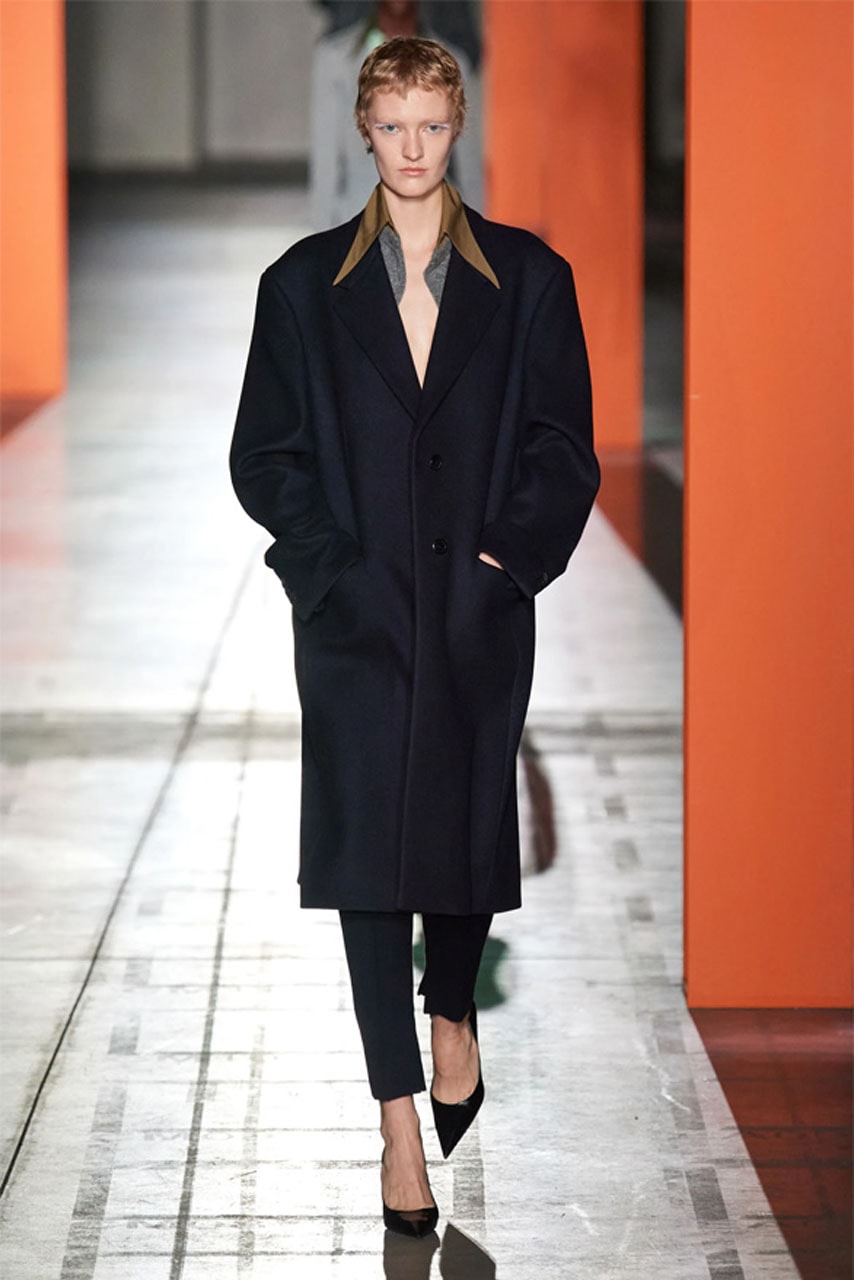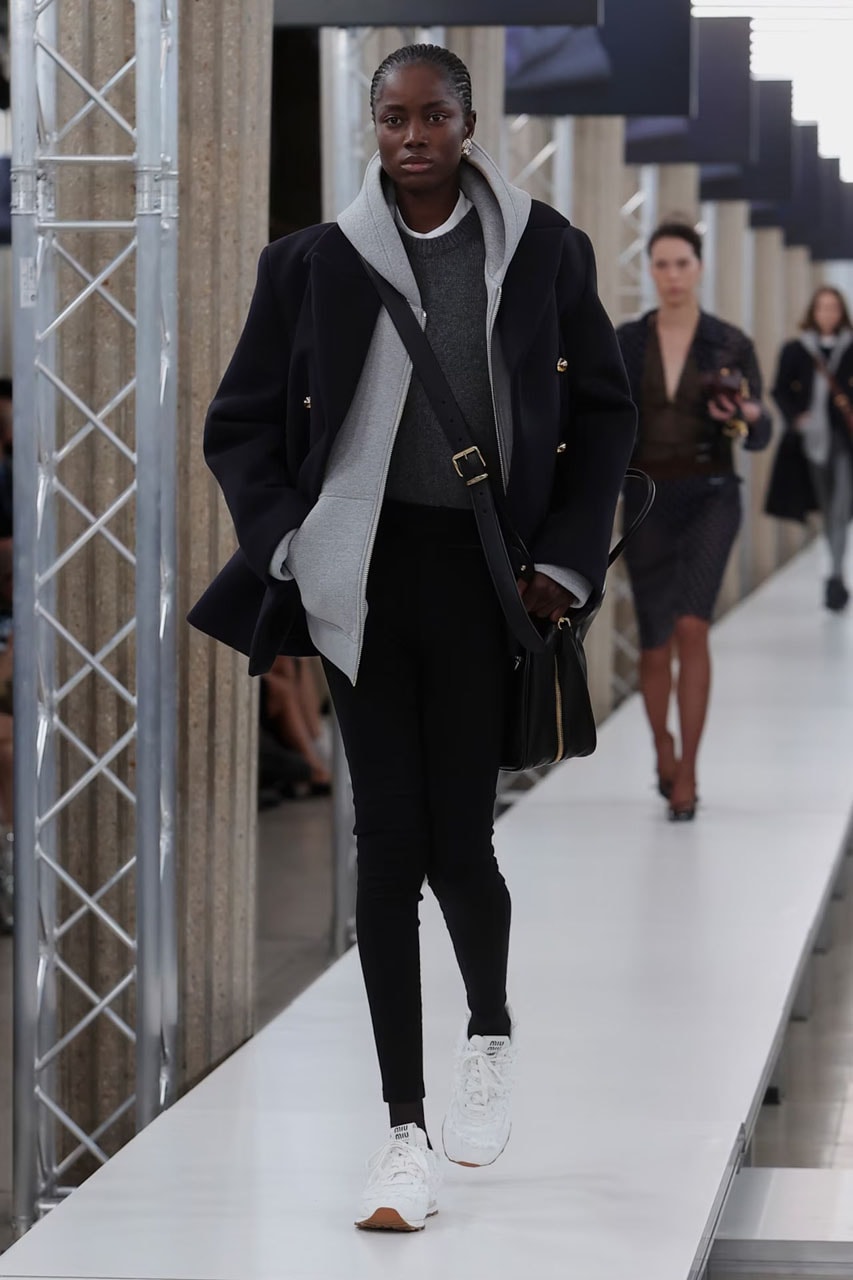Written By Dylan Kelly
First seen on HYPEBEAST
The stealthy-but-wealthy style has saturated the mainstream lexicon thanks to TikTok’s firm grip — but perhaps it’s taking the joy out of dressing.
Quiet luxury. You’re tired of reading it, and we’re surprised we’re still typing it. Nonetheless, it persists. A product of social media’s obsession with the style of popular TV shows, the trend denotes a low-key fashion language rid of logos and embracing high-quality materials, landing somewhere in between normcore and minimalism. In simpler terms, it’s a $1,000 USD Loro Piana baseball hat paired with a $2,750 USD cardigan from The Row. It’s Sofia Richie Grainge in matrimonial Chanel meets Jacob Elordi off-duty, headed to Erewhon. It’s Succession, it’s the Olsen twins, it’s Gwyneth Paltrow, in all black, convincing the world she’s not responsible for a 2016 ski collision at Utah’s luxury Deer Valley Resort. It’s one collective “shh!” from the world’s richest glitterati.
In the words of fashion blogger Benji Park, who operates as @fashionboy on TikTok, quiet luxury is “utilized by the ultra-wealthy to signify that they are part of the clique.” Per TikTok analyst Bernard Garby, who boasts an extensive professional background in luxury fashion, “It’s the minimalism that stands as the new maximalism.” Quiet luxury is everywhere, but you have to read the labels to find it.
On TikTok, the term “quiet luxury” has amassed more than 38.5 billion views, and according to Google statistics, the term, along with “stealth wealth” and “old money style,” has experienced a 900% increase in searches. The stats speak for themselves: high-fashion consumers are increasingly turning to well-made basics rather than flaunting expensive statement pieces. But, as the rich take a hushed approach to style, what’s happening to all the fun in fashion?
Many of September’s Spring/Summer 2023 runways were a maximalist’s dream (thanks to mood boards that were likely filled with previous years’ -cores, -cores and more -cores); but ‘tis the season, and catching a glimpse of those scrumptiously daring looks in the wild might as well be next to winning the lottery. Where’s that X-ray Off-White™ blazer, or GCDS’ strikingly pink SpongeBob SquarePants varsity sweater, or that cheeky “bubble object” Jacob Bixenman debuted at Eckhaus Latta’s El Jardin del Paraiso show?
In the wake of stealth wealth, “fun fashion” has become a rarity off the runway — and from a viewer’s perspective, it’s quite boring. Here’s a case for the bold: If you can snugly shell out for Loewe’s Pixelated Top, we urge you to maneuver Manhattan’s blocks like you’re scaling GTA IV’s Liberty City (safely, of course). If you possess the funds for JW Anderson’s Goldfish Dress, strut the streets like you’re the lucky swimmer to escape out of Darla’s grimy hands (yes, that was a Finding Nemo reference). Heck, if you have the money for Versace’s Meduse Travel Cup, slushie us like we’re members of the Glee Club! (I’m kidding.)
Yes, that’s all a bit ridiculous, but the point is made: luxury designers are having lots of fun, while their consumers are (largely) playing it safe. And if the lavishly loaded are passing on high-fashion’s eccentric offerings, how are these brands to keep afloat without paring back to meet consumers’ desires? In many instances, they’re pivoting.
You could call that a blanket statement, as many of these designers do maintain loyal, cult followings, but here’s some proof on the matter: according to data research company EDITED, luxury online brands’ output of new apparel, handbags and footwear featuring logos has declined by 18% year-over-year. Similarly, patterned pieces compose only 23% of luxury fashion, compared to 27% last year. And, as we’ve seen on Prada and Miu Miu’s recent runways, color options have also received the quiet treatment, with EDITED noting that “black apparel [has] increased by 11%, brown by 59% and grey by 64% YoY.”
Outside of pop culture, the socio-economic reasoning behind this shift makes sense: where post-lockdown liberation let fashion run wild, harsh economic times are changing the landscape, pushing luxury consumers to conceal their healthy bank accounts with stripped-back styles. “People now have this kind of feast or famine idea of wealth,” said Park. “We are seeing how people are becoming more discreet in their dressing, as the wealth divide increases.”
“This is the cycle of fashion. We’re just calling it something because Gen Z is obsessed with this idea of categorizing things.”
Quiet luxury, as a concept, has existed for as long as high-end fashion houses have been around, and we’ve seen minimalist styles skyrocket in response to economic downfalls before. During the Great Recession in 2008, for example, designers like Jil Sander and Phoebe Philo for Celine put forth collections defined by understated elegance, appealing to consumers looking for quality and longevity, as opposed to opulent statements, in their closets. Now, with TikTok, we have a nicely-packaged, marketable name for it.
“This is the cycle of fashion,” Park said. “We’re just calling it something because Gen Z is obsessed with this idea of categorizing things into trends so that content can be put out alongside them. And brands substantiate that process.”
In many ways, the quiet luxury aesthetic is easily obtainable for all consumers, thanks to its inconspicuous appeal, and aside from concealing a trust fund, a main point of the trend is to find pieces that stand the test of time. While “fun fashion” is exhilarating (and the jokes are just as entertaining), statement pieces usually have a shorter shelf life, due to their memorable nature and fashion’s fear of outfit-repeating (which, for the record, there’s nothing wrong with). But given quiet luxury’s timeless nature, might the trend actually be the positive push for more sustainable shopping that the industry needs?
“[Stealth wealth is] a post-COVID palette cleanser.”
In the wake of headlines naming Shein the world’s most popular brand at the tail-end of last year (yep, that still stings), we pleaded for a halt to the toxic cycle that perpetually pumps out the micro-trends — see goblincore, Barbiecore, regencycore, westerncore and so on — that fuel the fast-fashion machine. Now, after stuffing themselves with TikTok’s niche style movements for years, Gen Z, too, seems to find solace in quiet luxury’s minimalism — just without the gargantuan price tag.
“In the pandemic, there wasn’t much of a centralized identity because we weren’t able to participate in our local cultures,” said Park, himself a Gen-Zer. “We instead participated in this huge pastiche of internet culture, where we went through a million trends and a million subgroups. Now, we’ve reached this point where people perhaps feel so over-catered to that they’re actually paring back to this quite simple, quite elevated, quite timeless aesthetic.”
“It’s a post-covid palette cleanser,” he added.
While Kendall Roy’s Tom Ford Track Bomber might cost a hefty $6,490 USD, those adhering to TikTok’s fashion rules with smaller pockets can still replicate the look with a similar-looking grail at the thrift shop or through a more affordable brand. While their finds might not be true quiet-luxury items, they still offer a well-executed take on the trend’s larger push for simplicity.
Unfortunately, though, fast-fashion giants like Sh*in are still capitalizing on the movement with full shopping pages filled with straightforward styles dedicated to mimicking the trend. Are we surprised? Of course not. But at the very least (and I mean bottom-of-the-barrel bare minimum), fast-fashion consumers will be able to get more wear out of a simple, grey cardigan than, say, a mermaidcore-inspired top purchased for a one-time event. It’s far from ideal, but perhaps it could be a small step in slowing down the harmful trend cycle.
“If you drink too much on a night out, the next morning you want a glass of clean water. After indulging in maximalism, logos and flashiness, luxury consumers want minimalism. That’s their glass of water.”
On the other hand, for those in the tax bracket that can actually afford the $2,600 Loro Piana sweater, Garby argues that quiet luxury’s popularity is less a reflection of the recession and more a product of elevated taste. “Luxury consumers don’t feel bad about spending money,” he said. “With more money, their taste becomes more and more refined. If you drink too much on a night out, the next morning you want a glass of clean water. After indulging in maximalism, logos and flashiness, luxury consumers want minimalism. That’s their glass of water.”
Perhaps fashion is just reaching the backend of logomania, and stealth-wealth styles are offering a much-needed break from the chaos. It’s safe to assume that many brands will take the quiet luxury aesthetic into consideration when crafting their next collections, as consumers continue to opt for safer styles across many demographics. But fashion, at its heart, is an art form, and it wouldn’t be the industry that it is without all its sheer creativity.
“Everything in fashion comes and goes. Quiet luxury is just a phase.”
While the present-day market for extravagant design might be smaller, fun fashion will continue to exist — and it will prevail again. “Everything in fashion comes and goes,” said Garby. “Quiet luxury is just a phase.” At the end of the day, the industry will continue to sway between trends, and designers will continue to carry on their house pillars, whether those be stealthily coded or ridiculously loud. For shoppers, though, it appears that fun has taken the back seat — for now.
In the spirit of Succession’s finale, the show that arguably set TikTok ablaze on the topic in the first place, here’s a final piece of advice: buy that ludicrously capacious bag, or don’t. It’s all up to you. As a consumer, the most sustainable way to navigate fashion’s shifting tides is to stick to your own personal style codes.







